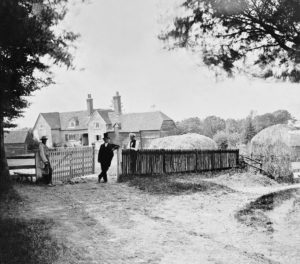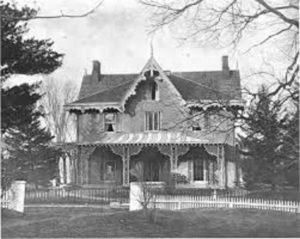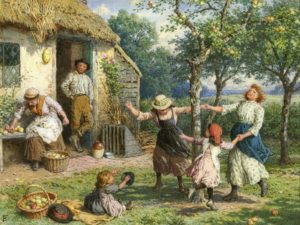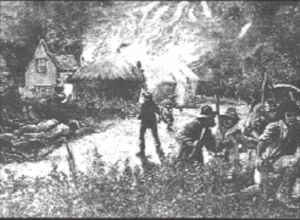Britain was basically a rural and agrarian society until 1800. The rural community included landowners, farm owners, land workers, land agents, tradesman, craftsmen, farmers, to name a few professions.

Let’s see what are some of the most crucial aspects of Rural Life in Victorian England to be precise…
Agricultural Customs and Rural Culture
The first most important thing that described Victorian England was an agricultural based society. People cultivated for a livelihood and to earn.
Dual-Farming And Weaving Economy
Most of the population generally depended on weaving and farming. This w general condition and picture of Rural English Countryside
Year Wise
Early Period- The Backdrop to the Victorian Age acted as a Pre-cursor
1815-1830’s
During this time, there was a growing inter-connectedness between rural and urban areas.
The beauty of the Rural English landscape is beyond words.
In 1830- Rural Housing
The housing was a combination of poor quality housing and inferior building material. The quality of life wasn’t really good. The rich had brick-built and stone houses. But, mud houses and sheds were a living reality (in The nature of work determined the quality of housing.
Gothic Revival Style Developed In the Urban Areas- Glaring Contrast Could be seen

Notwithstanding weavers and textile laborers, it mattered more. The farmers any which ways spent more than 10 hours in the fields.
Between 1815 and 1830, England went through a depression phase.
The wages were very low. One of the historians, James Caird found out in his agricultural survey of 1851, that there was a wide gap in wages. The people in the south and west had better and higher wages, whereas people residing in the north and east received lower wages.
There’s a beautiful description of The Rural Life Of England written in 1838, by William Howitt which is a detailed survey in the rural country life. It evokes romantic sensibilities of the Victorian Era and also is an excellent work which describes the beauties of nature and English Landscape. It also describes the cottage life and festivals of the age.
The basic revelation is that Rural England was a rustic and simple society. Commuter villages started springing up. This was mainly around Leeds, Manchester, and London.

After the 1830s
During this period many successive Reform Acts were passed. In the year 1832, the re-distribution of power took place. However. much of the power remained in the countryside. Both politically and economically.
During this period, many young men started to migrate to urban areas in search of work and employment.
The Captian Swing Riots of 1830 in Southern England
There was general unrest in Rural England Society Because of abject poverty and bad living conditions. People were poor and remained in unhygienic conditions. Malnutrition was common. There were many peasant revolts.

During the 1850s
According to a study in 1851, nearly of the population in Britain lived in rural areas and most of the people were born in the countryside areas and villages.
There are a few important misconceptions that prevailed about rural life.
First. That the rural life was separate and distinct identity from that of the towns which were not really true. In fact, Rural Areas always continued to keep in touch with the towns.
Second. Life of rural areas was much easier than that of town dwellers. This is not true. They had to work equally hard in the fields.
Housing Gradually Improved during the 1850s.
During the end of this period, by the 1890s, the middle class grew. The social life became impregnably known by the rising, middle class who remained in the country and rural side and worked around land ownership, residences, and land movements.
So, The rural life was simple, with rustic appeal and romantic embrace.